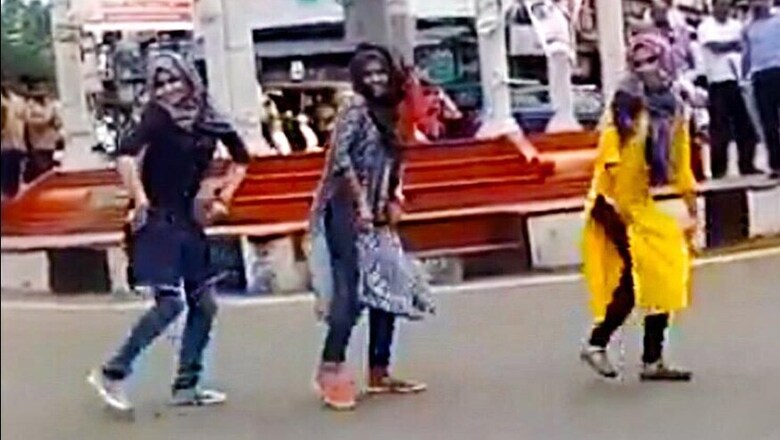
views
A group of students led by the CPM student body, the SFI, gathered on a Saturday afternoon along the main street of Trivandrum, just outside the University College.
The occasion was SFI's challenge to the religious orthodoxies gaining ground in Kerala. It was to protest against the trolling of three Muslim girls who had staged a flash dance during an Aids awareness programme in the northern Kerala city of Kozhikode.
Three Muslim girls (clad in scarf but wearing jeans) danced outside the college and outside the venue of the International Film Festival in open defiance of religious diktats that have made the life of Muslim women in a modern society like Kerala increasingly miserable.
The flash mob, held with Leftist support, gained huge traction on Facebook where it was live, and turned the focus on the increasing conflict between modernity and religious orthodoxy in Kerala.
SFI's slogan for the events was "Humanity is the answer to the fatwa of religious fundamentalists".
This dance of protests cannot just be dismissed as a flash in the pan. They are significant for many reasons.
1. Very few such protests against fundamentalism take place across the country
2. Nowhere in the world have Muslim women come out to dance in protest against issues concerning them
3. Kerala is building a modern Muslim resistance against the rising fundamentalist beliefs and practice within the community in Kerala, which is extremely affluent.
4. Kerala is becoming the flash (dance) point in the narrative of modernity vs. fundamentalism
"Every individual has his or her freedom. Hijab is only part of one's religious beliefs. It should not be seen as a weapon to suppress Muslim women," Namitha Farzana, one of the University College dancers, told The Indian Express.
"There are liberals in the Muslim community also. If Hindus and Christians can dance, why can't Muslims? The three girls of Malappuram had taken part in a flash mob with the noble intention of spreading Aids awareness through art. Their freedom should be respected."
Islam in Kerala is affluent, mostly cosmopolitan with universal literacy. Being affluent and educated, the community has been mainstreamed for a long time and has long since moved away from the 'ghetto-ised Muslims' in other parts of the country.
The main reason for this is that the Muslim League has been in power for many years. This is a unique achievement no doubt. But at the turn of the century, Wahabism gathered strength in Kerala, due to the rise of some seminaries in north Kerala and also some firebrand mullahs, mostly Sunni, who also have an eye on politics, started plying their trade with vigour with funding from dubious organisations in the Saudi Arabia.
The Popular Democratic Front has tried, not with much success, to espouse a hardline form of Islam.
It is in this context that the escape of certain young Muslim families from Kerala to join the IS has to be seen.
There can be no doubt that such fundamentalists are also interested in converting Christians and Hindus.
The rise of the RSS in Kerala can also be traced to the rise of Islam, apart from localised political issues. Like Christian seminaries in an early age, Muslim seminaries in Malabar offer not just a new religion, but opportunities, education, money and jobs. Many Hindus in Kerala find themselves closer to the bottom of the pile and look at the rise of Muslim affluence with envy and a certain degree of fear.
Such an educated, affluent community, which has a population of over 80 lakh compared to the Hindu population of more than 1.8 crore and Christians around 60 lakh, also holds many attractions to certain Hindus of the neglected sections who see the community opening doors not only to affluence, but also to a wider Islamic world (Gulf) where opportunities and money is there for the taking.
The flash mob dance was against the attempt to keep aspirational girls trapped within the confines of an imposed conservatism. Significantly, the girls in the video can be seen wearing jeans, a clear sign of modernity while making some concessions to orthodoxy by wearing a scarf, a sort of mid-way sartorial position between the hijab and a ‘secular’ dress.
The flash dances are no doubt a small but serious questioning of orthodoxy. That it happened in Kerala — a lab for many such political experiments — is not a surprise.
Apart from improving the artistic and physical fitness of Kerala youth, such public dances are a clear and powerful defiance of imposed orthodoxy which has so far had a clear run.
(The author is a senior journalist. Views are personal).




















Comments
0 comment